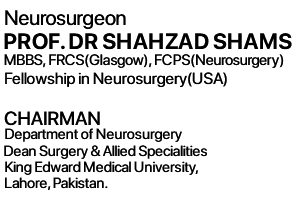Introduction to Trigeminal Neuralgia
Trigeminal neuralgia, often referred to as “tic douloureux,” is a severe neurological condition characterized by sudden and excruciating facial pain. This disorder affects the trigeminal nerve, one of the cranial nerves responsible for transmitting sensory information from the face to the brain. Trigeminal neuralgia is known for its paroxysmal, stabbing, and shock-like pain episodes, which can be triggered by even the slightest touch or movement of the face, such as eating, talking, or even a gentle breeze.
Symptoms of Trigeminal Neuralgia
Trigeminal neuralgia is notorious for its distinctive and excruciating symptoms, primarily centered around the face.
These symptoms can vary in intensity and frequency but are typically characterized by the following:
Sudden, Severe Facial Pain
The hallmark symptom of trigeminal neuralgia is intense, stabbing, or electric shock-like pain in the face. This pain can occur on one side of the face or both but is usually concentrated in the areas served by the trigeminal nerve, including the cheek, jaw, teeth, gums, and forehead.
Paroxysms of Pain
The pain episodes are paroxysmal, meaning they come on suddenly and unpredictably. These attacks can last from a few seconds to a couple of minutes, with multiple episodes occurring in rapid succession.
Trigger Factors
Trigeminal neuralgia pain is often triggered by everyday activities such as eating, drinking, talking, brushing teeth, or even touching the face lightly. The pain can also be provoked by external factors like a gust of wind or a slight change in temperature.
Intermittent Pain-Free Periods
In between the painful episodes, individuals with trigeminal neuralgia may experience periods of relief when they are entirely pain-free. These pain-free intervals can vary in duration.
Unilateral Pain
Trigeminal neuralgia typically affects one side of the face, although it can, in rare cases, involve both sides. The pain is usually unilateral and does not cross the midline of the face.
Facial Twitching or Spasms
Some people with trigeminal neuralgia may also experience involuntary facial muscle contractions or spasms, known as “tic.”
Progressive Worsening
Over time, the frequency and severity of pain attacks can increase, leading to more significant disruption of daily life.
It’s crucial to note that the pain associated with trigeminal neuralgia can be so severe that it is often described as one of the most intense forms of pain a person can experience. Because of this, seeking medical evaluation and appropriate treatment is essential for managing this condition and improving one’s quality of life. If you or someone you know is experiencing these symptoms, it is advisable to consult a healthcare professional for a proper diagnosis and treatment plan.
Causes of Trigeminal Neuralgia
Trigeminal neuralgia, characterized by intense facial pain, can result from various factors that affect the trigeminal nerve. Although the precise cause is not always clear, here are some common factors and conditions associated with trigeminal neuralgia:
Compression of the Trigeminal Nerve
One of the most frequent causes of trigeminal neuralgia is the compression of the trigeminal nerve by nearby blood vessels, particularly arteries. This compression can lead to irritation or damage to the nerve, triggering the characteristic pain.
Multiple Sclerosis (MS)
Trigeminal neuralgia can be a secondary symptom of multiple sclerosis, a chronic autoimmune disorder that affects the central nervous system. In MS, demyelination (loss of the protective covering of nerve fibers) can disrupt the normal functioning of the trigeminal nerve, causing pain.
Tumors
Benign or malignant tumors, especially those in the vicinity of the trigeminal nerve, can exert pressure on the nerve, leading to trigeminal neuralgia. Tumors can also damage the nerve directly.
Nerve Damage
Any injury or trauma to the trigeminal nerve, such as dental procedures, facial surgery, or accidents, can potentially result in trigeminal neuralgia.
Aging
While not a direct cause, trigeminal neuralgia tends to be more common in older individuals, suggesting that age-related changes in blood vessels or nerve structures may contribute to its development.
Genetic Predisposition
Some individuals may have a genetic predisposition to develop trigeminal neuralgia, although the exact genetic factors involved are not fully understood.
Infections
Certain viral infections, such as herpes simplex virus (HSV), varicella-zoster virus (VZV), or Epstein-Barr virus (EBV), have been linked to trigeminal neuralgia in rare cases.
Vascular Abnormalities
Besides artery compression, other vascular abnormalities like arteriovenous malformations (AVMs) or arteriovenous fistulas (AVFs) can disrupt normal nerve function and potentially lead to trigeminal neuralgia.
It’s important to note that in many cases, the exact cause of trigeminal neuralgia remains unknown (idiopathic). Diagnosis and treatment are typically focused on alleviating the painful symptoms rather than addressing the underlying cause, especially when the cause is not readily identifiable. If an individual experiences symptoms suggestive of trigeminal neuralgia, seeking prompt medical evaluation is crucial to determine the cause, rule out other potential conditions, and initiate an appropriate treatment plan to manage the debilitating pain associated with this condition.
Treatment for Trigeminal Neuralgia
Trigeminal neuralgia is a debilitating condition characterized by excruciating facial pain. Fortunately, there are several treatment options available to help individuals manage this distressing ailment. One notable neurosurgeon renowned for his expertise in treating trigeminal neuralgia is Dr. Shahzad Shams, a highly best Pakistani neurosurgeon. Here, we’ll explore some of the common treatments for trigeminal neuralgia and the importance of seeking specialized care, like that provided by Dr. Shahzad Shams.
- Medications: Initially, many patients are prescribed medications to manage pain. Anticonvulsant drugs like carbamazepine and oxcarbazepine are often effective in reducing the frequency and intensity of pain attacks.
- Nerve Blocks: In cases where medication alone is not sufficient, nerve blocks may be administered. These involve injecting anesthetic agents or alcohol into the affected trigeminal nerve to provide temporary relief from pain.
- Surgical Interventions: Surgical procedures are considered when other treatments prove ineffective or when the side effects of medications are intolerable. Dr. Shahzad Shams specializes in various surgical techniques, including:
a. Microvascular Decompression (MVD): This procedure involves relocating or removing blood vessels that are compressing the trigeminal nerve, thus alleviating the pain.
b. Percutaneous Rhizotomy: In this minimally invasive procedure, Dr. Shahzad Shams may use a needle to damage or disrupt the trigeminal nerve’s function, reducing pain signals.
c. Gamma Knife Radiosurgery: A non-invasive approach, this treatment uses precisely focused radiation to target the trigeminal nerve and reduce pain.
- Neuromodulation: Techniques such as spinal cord stimulation or peripheral nerve stimulation may be considered to modulate the pain signals traveling along the trigeminal nerve.
-
Alternative Therapies: Some individuals explore complementary therapies like acupuncture or biofeedback to help manage pain and improve their overall well-being.






